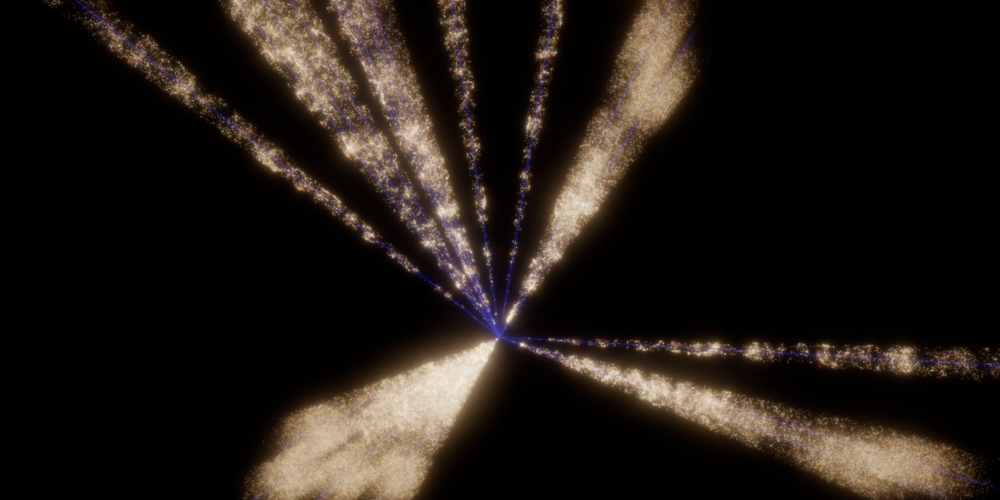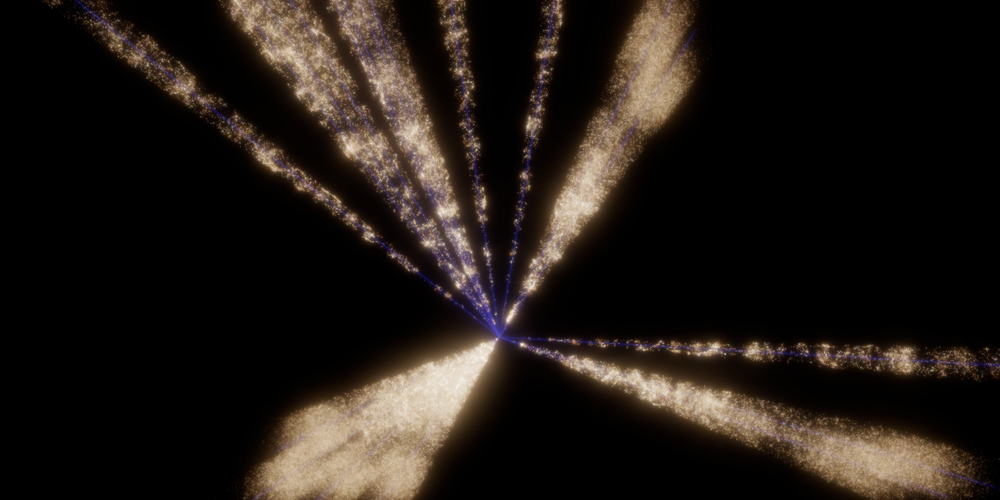Dark Energy Spectroscopy Instrument Releases First Data
This week, a team of over 1000 scientists from around the globe released to the public the first batch of data collected with the Dark Energy Spectroscopy Instrument (DESI), a telescope that cosmologists hope will help answer open questions on the nature of dark energy and the evolution of the Universe [1–3]. “The telescope works better than we ever imagined,” says Michael Levi, a cosmologist at Lawrence Berkeley National Laboratory (LBNL), California, and the director of the DESI Collaboration. “We are ready to have everybody look at this [initial] data release and see what they can do with it.”
The goal of the five-year-long DESI survey is to map the Universe deeper in time and higher in detail than any previous telescope (see Feature: Entering a New Era of Dark Energy Cosmology). “We want to go way beyond what was done before and really be able to see the evolution of dark energy over the history of the Universe,” says Nathalie Palanque-Delabrouille, a cosmologist at LBNL and one of the spokespeople for the DESI Collaboration. To see that evolution, the survey plans to pinpoint the locations of over 40 million galaxies. The key to filling in the cosmic map is the use of robotic technology that automatically alters the placements of light-collecting fibers so that they can retrieve spectroscopic information from targeted bright spots in the sky. The spectral measurements provide information on what an object is and how fast it is moving away from us, which is needed to estimate its distance.
The robotic technology used to target objects had never been tried before, so it was not always clear that DESI would perform as expected, Levi says. But he and other team members have been pleasantly surprised by how smoothly the machine has operated. “DESI has preserved every photon that the Universe gave us,” he says.
The newly released DESI dataset contains over 80 terabytes of information on close to 2 million astrophysical objects and was gathered in the so-called validation stage of the survey. As part of the validation, the DESI Collaboration performed various tests of the measurement and telescope parameters to check that the instrument could collect the data that they wanted in the time period that they planned.
The validation also included performing the so-called One-Percent Survey in which the collaboration had the telescope probe 1% of the full survey’s target region but in much higher resolution. Over the course of two months, the telescope collected light along 20 lines of sight, or “beams,” that cut through the Universe like geologic core samples. The galaxies captured in this survey provide a historical record that extends back 12 billion years, when galaxy formation was just starting. “These 20 beams are amazingly complete—we drilled down on what they contain in much more detail than we will for any part of the sky in the main survey,” Palanque-Delabrouille says.
One interesting object that the DESI team spotted in the One-Percent Survey is a 12-billion-year-old quasar, a luminous galactic nucleus that is powered by a supermassive black hole. While Palanque-Delabrouille notes that other surveys have found older quasars, these objects are incredibly rare so every new one found provides an opportunity to uncover new information about the cosmos. “It’s an extremely nice object to see,” she says. Arthur Kosowsky, a cosmologist at the University of Pittsburgh agrees. “DESI is breaking new ground in quasars and high-redshift galaxies with just this first taste,” he says.
DESI scientists have also spotted stars falling into and escaping from the Andromeda galaxy, the Milky Way’s closest neighbor. Levi says the collaboration mapped Andromeda as an afterthought, using a ten-minute window to collect 5000 measurements of the positions and velocities of stars within the galaxy. “These data show the Andromeda galaxy in a previously unknown level of detail,” he says. The collective motion of the measured stars shows that a small galaxy once collided with Andromeda.
The data release comes with no DESI-data-derived cosmological results; it will likely be another year before those start arriving, as they will be based on the analysis of main survey data, says Anthony Kremin, a cosmologist at LBNL and the lead scientist on the processing of the validation data. The survey is now in the third of its planned five years, and the first years’ worth of data is still being processed. “The data released today are a small fraction of the data we expect to collect,” Palanque-Delabrouille says. “We don’t want to bias future cosmological analyses by extracting early cosmological results from this minor sample.”
Even without such findings, Levi calls this week’s release “transformational” for the field. He notes that until ten years ago, it might take a researcher their whole career to collect the data for a few thousand galaxies. A few zeros were added to that number with the advent of the Sloan Digital Sky Survey, which made spectroscopic measurements of a few million objects. But Levi says that number is tiny compared to what he expects the main survey to capture. Wendy Freedman, a cosmologist at the University of Chicago is excited to see what the main survey data turn up. “What is most impressive here is how fast [DESI] has overtaken all previous surveys, and this [data release] is only the tip of the iceberg.” Kosowsky adds, “It’s a stunning technical achievement.”
Correction (20 June 2023): The One-percent Survey took two months to conduct and not five as stated in an earlier version of this story. As a whole, the validation stage of the survey took around five months to complete.
–Katherine Wright
Katherine Wright is the Deputy Editor of Physics Magazine.
References
- “DESI Data Documentation” (2023); https://data.desi.lbl.gov/doc/.
- DESI Collaboration et al., “Validation of the scientific program for the Dark Energy Spectroscopic Instrument,” arXiv:2306.06307v2.
- DESI Collaboration et al., “The early data release of the Dark Energy Spectroscopic Instrument,” arXiv:2306.06308.





